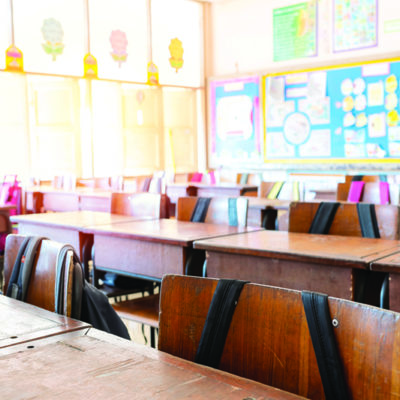Gov. Gavin Newsom has signed Assembly Bill 104 (Gonzalez), one of the most notable bills from this legislative session. The measure contained an urgency clause, which means its provisions take effect immediately. The following summarizes the statutory changes:
Student Retention
Eligible students: A student enrolled in kindergarten through 11th grade in 2020-21 who has received deficient grades for at least one-half of the student’s coursework in 2020-21.
- “Deficient grade” is defined as receiving a D, F, a No Pass, or an equivalent as determined by the local educational agency.
- The retention provisions of the bill do not apply to students who were in 12th grade in 2020-21.
Consultation meetings: An LEA, upon receiving a written request from a parent of an eligible student (see above) to retain their child for the 2021–22 school year, shall offer the parent a consultation with the parent, the student, an administrator, and a teacher
- The consultation must occur within 30 calendar days of receiving the written request
- Consultations must include the following:
- Discussion of all available learning recovery options, including access to prior semester courses in which the pupil received a D or F letter grade, or some other form of credit recovery
- Consideration of the pupil’s academic data and any other information relevant to whether retention is in the pupil’s best interests, academically and socially
- Discussion about research on the effects of pupil retention and the types of interventions and supports that are beneficial to pupils
Retention decision: LEAs have the ultimate authority of deciding whether or not to retain a student. LEAs must notify a parent of the final determination within 10 calendar days of the consultation
Pass/No Pass Grades
Eligible students: Students enrolled in high school in the 2020–21 academic year may apply to have a letter grade replaced with a pass or no pass grade.
Course limitations: LEAs cannot limit the number or type of courses eligible for the grade change.
- Grade changes must not negatively affect a student’s grade point average
Colleges and Universities: The California State University must accept pass or no pass grades without prejudice for any applicant enrolled in high school between 2020-21 and 2023-24.
- The measure encourages but does not compel, the University of California and private colleges and universities to do the same.
- Within 20 calendar days, the Department of Education must post a list of all post-secondary educational institutions within the state that have indicated they will accept pass/no pass grades without prejudice.
- Notifying students and families: Within 15 days, CDE must provide LEAs with an application template for grade changes
- Within 15 days of CDE posting the application template, LEAs serving high school students must post on its website and provide written notice to students and families of the grade change option.
- The notice must include 1) the grade change request application, 2) a list of post-secondary educational institutions that have indicated they will accept these grades without prejudice, and 3) a statement informing families that some higher educational institutions, including those from other states, may not accept a pass no pass grade.Girl
Transcripts: Students have 15 calendar days from when LEAs provide written notice and post on its website the option to apply.
- LEAs have 15 days from receipt of an application to update a transcript and notify a student and family of the grade changes.
Local Graduation Requirements exemption
- LEAs must exempt students enrolled in their 3rd or 4th year of high school in 2020-21 and who are not on track to graduate in four years from all coursework and other requirements adopted by the governing body that is in addition to the statewide coursework requirements.
- LEAs must provide these students the opportunity to complete the statewide coursework required for graduation, which opportunity may include, but is not limited to, a fifth year of instruction or credit recovery.









Leave a Comment